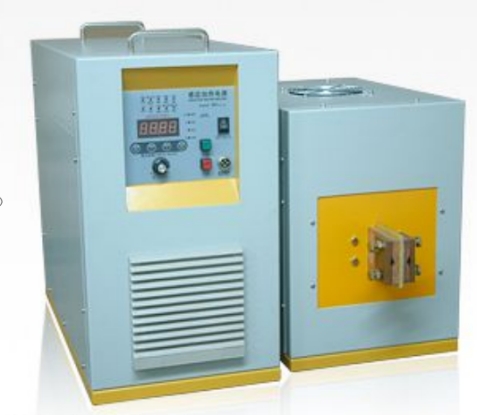- 16
- Dec
The basic principle of induction heating quenching and self-tempering of welds
Ny fitsipika fototry ny induction heating quenching and self-tempering of welds
The weld heat treatment method is suitable for low carbon and low alloy steel welded pipe weld heat treatment, and its basic principle is as follows.
(1) Refining the grains of the weld metal. The high temperature of welding fusion makes the grains of the weld and heat-affected zone coarser, reducing its strength and toughness. After the induction heating is used to quickly raise the temperature to the austenitizing temperature, the fine grains are obtained by rapid quenching, which eliminates the grain coarsening of the weld and improves its performance.
(2) Use quenching residual heat to perform low-temperature tempering welding seam heating to quenching temperature, immediately spray water cooling, when the welding seam is cooled to 200~300°C, stop spraying water cooling, at this time the welding seam temperature is called the quenching termination temperature . The weld is then cooled in air for self-tempering, and the self-tempering temperature is 250~150°C. When the weld is cooled from the austenitizing quenching temperature to 200~300°C, a mixed structure of martensite and retained austenite is formed. When tempered at a low temperature of 250~150°C, the martensite in the weld decomposes to reduce the hardness, while the retained austenite transforms into bainite or tempered martensite, which increases the hardness. As a result of the combined effect of this increase and decrease, the weld metal maintains high strength and good toughness.
In short, after rapid heating and austenitizing and quenching, the weld metal grains are refined. At the same time, the quenching termination temperature is controlled to maintain the good toughness of the weld. After low temperature tempering, a fine tempered martensite structure is obtained, so that the weld has high toughness and high strength. This is the basic principle of induction heating quenching and self-tempering of welds.
The basic principle of induction heating quenching and self-tempering of welds
The weld heat treatment method is suitable for low carbon and low alloy steel welded pipe weld heat treatment, and its basic principle is as follows.
(1) Refining the grains of the weld metal. The high temperature of welding fusion makes the grains of the weld and heat-affected zone coarser, reducing its strength and toughness. After the induction heating is used to quickly raise the temperature to the austenitizing temperature, the fine grains are obtained by rapid quenching, which eliminates the grain coarsening of the weld and improves its performance.
(2) Use quenching residual heat to perform low-temperature tempering welding seam heating to quenching temperature, immediately spray water cooling, when the welding seam is cooled to 200~300°C, stop spraying water cooling, at this time the welding seam temperature is called the quenching termination temperature . The weld is then cooled in air for self-tempering, and the self-tempering temperature is 250~150°C. When the weld is cooled from the austenitizing quenching temperature to 200~300°C, a mixed structure of martensite and retained austenite is formed. When tempered at a low temperature of 250~150°C, the martensite in the weld decomposes to reduce the hardness, while the retained austenite transforms into bainite or tempered martensite, which increases the hardness. As a result of the combined effect of this increase and decrease, the weld metal maintains high strength and good toughness.
In short, after rapid heating and austenitizing and quenching, the weld metal grains are refined. At the same time, the quenching termination temperature is controlled to maintain the good toughness of the weld. After low temperature tempering, a fine tempered martensite structure is obtained, so that the weld has high toughness and high strength. This is the basic principle of induction heating quenching and self-tempering of welds.

